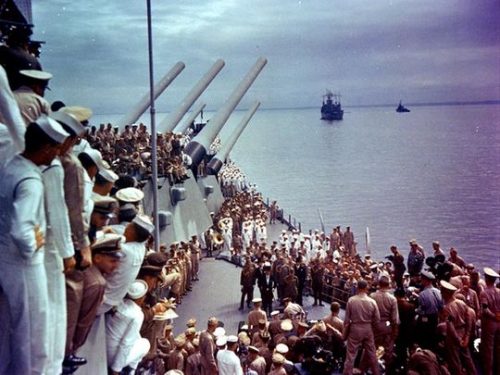Heinz Guderian was a German general who played an important role in the development of Blitzkrieg tactics. He was also a highly effective field commander, known to his men by the nickname “Hurrying Heinz.”
Also not a bad writer–here’s his description of the character of Adolph Hitler:
He had no real friend. His oldest Party comrades were, it is true, disciples, but they could hardly be described as friends. So far as I can see there was nobody who was really close to him. There was nobody in whom he would confide his deepest feelings. There was nobody with whom he could talk freely and openly. As he never found a true friend, so he was denied the ability to deeply love a woman. He remained unmarried. He had no children. Everything that on this earth that casts a glow of warmth over our life as mortals, friendship with fine men, the pure love for a wife, affection for one’s own children, all this was and remained for ever unknown to him. His path thru the world was a solitary one and he followed it alone, with only his gigantic plans for company.
There is an interesting parallel between the above excerpt and a passage in Thomas Carlyle’s review of Faust, published in 1822:
Mephistopheles is not the common devil of poetry, but one much more adapted to his functions. It is evident that he was a devil from the first and can be nothing else. He is emphatically ‘the Denyer’, he fears nothing, complains of nothing, hopes for nothing. Magnanimity, devotion, affection, all that can sweeten or embellish existence, he looks upon as childish mummery.
(No, I’m not accusing Guderian of plagiarism…there are things a lot worse than plagiarism of which he could be justly accused! But it is very likely that he read Faust in school, and I wonder if he might have also been exposed to early commentary on the play, including the Carlyle piece.)
While searching for the Guderian quote (in conjunction with my recent Faust post), I ran across this blog post, which attempts to draw parallels between Guderian’s description of Hitler’s character, and…the character of Donald Trump. The blogger does this by interspersing passages from the Guderian quote with comments about Trump made by Mark Shields and David Brooks in a PBS Newshour appearance.
(Now, personally, I don’t see why anyone would consider a man who evaluates presidential candidates by the quality of the crease of their trousers as a particularly good source for analysis and insight, but whatever…)
Something is missing from the linked blog post, as it is from many similar Trump denunciations….and that is the name Hillary Clinton. Because Trump isn’t running in a vacuum, he isn’t running against, say, JFK or Harry Truman or even Jimmy Carter; he is running against Hillary Clinton, and barring some unlikely event or events, one of the other of them is going to be President.
And I would assert that whatever degree of match there might be between Trump’s character and the character outlined in the Guderian piece, the match is considerably stronger in the case of Hillary Clinton.
